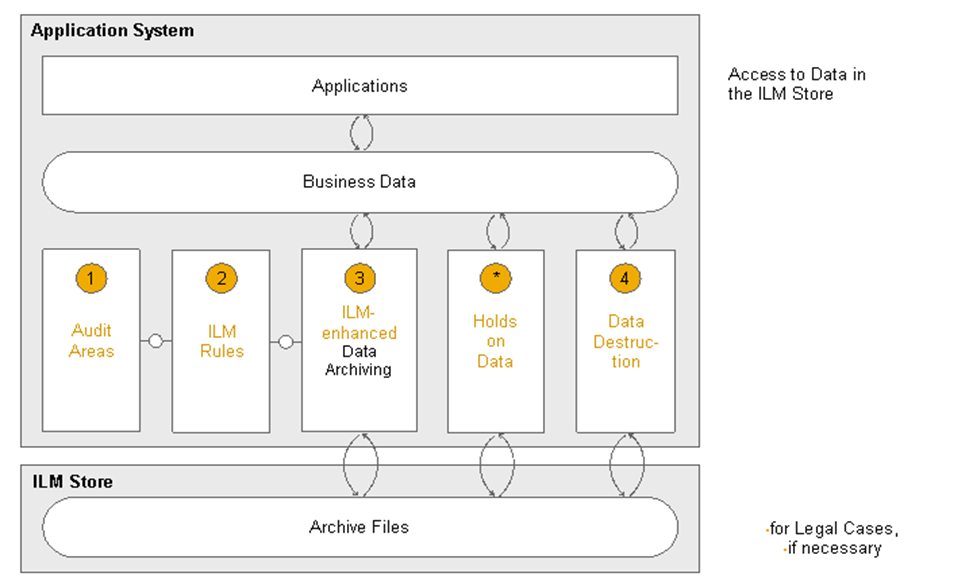The ILM RM is a reference model that provides guidelines and best practices for implementing an effective information lifecycle management strategy.

CREATION OR ACQUISITION
This stage involves capturing or acquiring data and information from various sources, such as databases, files, or external systems.
CLASSIFICATION
Data and information are classified based on their value, sensitivity, or other relevant criteria. This classification helps determine the appropriate level of protection, retention periods, and access controls.
STORAGE
Data and information are stored in appropriate storage systems or platforms, considering factors like performance, accessibility, security, and cost.
RETENTION
During this stage, the duration for which data and information need to be retained is determined based on legal, regulatory, or business requirements. Retention policies and procedures are established to ensure compliance.
PRESERVATION
In this stage, long-term preservation strategies are implemented to ensure the integrity, authenticity, and accessibility of data and information over time. This may involve migration to new storage technologies or formats to prevent obsolescence.
DISPOSAL
When data and information are no longer required to be retained, they are disposed of securely and in compliance with relevant regulations. This may involve data destruction techniques like shredding or secure erasure.
The ILM RM serves as a guide for organizations to develop and implement their information lifecycle management strategies effectively. It helps ensure that data and information are managed efficiently, meeting compliance requirements, minimizing risks, and optimizing storage resources. we provide expert consulting of ILM RM to our customer.
